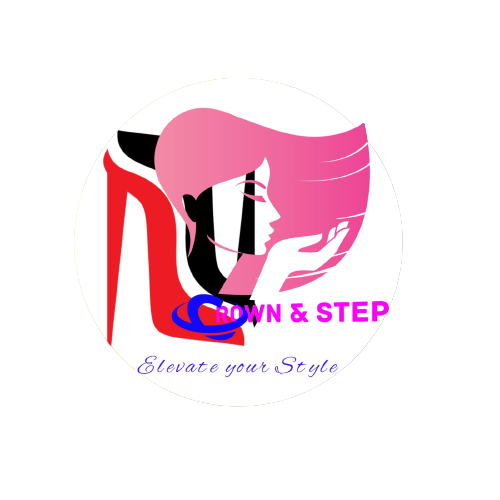Secondhand shopping has become more than just a way to save money – it’s a smart choice for sustainability and unique finds. But sifting through racks to uncover treasures can sometimes feel overwhelming. Knowing how to spot quality pieces is the key to walking away with items that last, look great, and hold their value. From materials to craftsmanship, a little knowledge goes a long way in making your thrift store trips worthwhile. Ready to shop smarter? Let’s get started.
Benefits of Shopping Secondhand
Secondhand shopping isn’t just a passing trend—it’s a purposeful move toward a more sustainable, cost-effective, and mindful way of consuming. From preserving the planet to saving money, the benefits extend far beyond the price tag. Let’s break it down.
Environmental Impact of Secondhand Shopping

Photo by cottonbro studio
Shopping secondhand plays a significant role in reducing waste and embracing sustainable fashion. Every time someone buys pre-loved clothes, it decreases the demand for new production. Why does this matter? The fashion industry is responsible for 10% of global carbon emissions and massive water consumption—up to 2,700 liters just for one cotton t-shirt.
By extending the lifecycle of clothing, thrifting reduces the environmental footprint. Studies have shown that secondhand fashion lowers climate impacts by up to 42% compared to buying new. Additionally, less clothing ends up in landfills, which is crucial considering that 85% of textiles are dumped each year.
Here’s more good news: secondhand shopping helps conserve resources like water, energy, and raw materials. Instead of contributing to the destructive cycle of fast fashion, you’re actively making a positive impact.
Cost Savings Compared to Buying New
One of the biggest perks of shopping secondhand is how gentle it is on your wallet! Quality, name-brand, or even luxury items can often be found at a fraction of their original price. According to various reports, secondhand pieces are often priced 25%-50% lower than new items, offering incredible savings for savvy shoppers.
Imagine snagging a designer coat for 80% off retail or outfitting yourself for an entire season at a fraction of the cost. Beyond just immediate savings, buying well-made secondhand items means they tend to last longer, saving you money in the long haul.
For many families, thrifting has even become a budgeting strategy to stretch dollars further without sacrificing quality. In fact, Americans who shop secondhand save an average of $1,700 annually, while still finding trendy or classic wardrobe staples. Why pay full price when treasures are waiting to be unearthed?
Key Factors to Identify Quality in Secondhand Pieces
When it comes to secondhand shopping, the difference between a good find and an amazing treasure lies in understanding what makes a piece high quality. To ensure you’re investing in items that will last, it’s essential to evaluate materials, craftsmanship, and the overall condition of each piece. Let’s break it down into a few key criteria.
Evaluating Fabric and Materials
Fabric is one of the most telling signs of quality. Natural fibers like wool, cotton, and silk not only feel luxurious but also tend to withstand wear and tear better than synthetic alternatives. These materials often have a weight and texture that stand out when compared to lower-quality fabrics.
- Natural Fibers: Wool is warm and resilient, cotton is breathable and easy to clean, and silk adds an unmistakable touch of elegance.
- Synthetic Blends: Materials like polyester or rayon can be durable but may not age as well. They can pill, lose their shape, or feel uncomfortable over time. Still, blends that combine natural and synthetic fibers may offer the best of both worlds—durability with a touch of softness.
Tip: Crush the fabric lightly in your hand to check for wrinkles. Natural fibers wrinkle easily, hinting at higher quality, whereas synthetics generally retain a smooth appearance.
Inspecting Construction and Stitching
The stitching on a garment tells you a lot about its quality and potential longevity. High-quality clothing will have tight, even stitching with no loose threads or skipped areas. The seams should feel firm and lay flat, with reinforcing present in high-stress areas like underarms or the crotch.
Here’s what to check:
- Straight Seams: Avoid garments with crooked seams; they’re often poorly made.
- Stress Points: Look at points that frequently experience wear, like pockets and zippers. Reinforcement stitching here is a good sign.
- Interior Finish: Quality pieces will have neat finishing touches inside, like clean overlock seams or even linings.
Run your fingers over the seams to test their strength. If they feel delicate or pull apart easily, the garment might not hold up with regular wear.
Assessing Hardware and Embellishments
Zippers, buttons, and other closures are important details that often get overlooked. Durable, functional hardware indicates that extra care was put into the garment’s construction.
- Zippers: Opt for metal zippers instead of plastic ones—they tend to be more robust and reliable.
- Buttons: Check to see if all buttons are intact and securely stitched. A sign of high craftsmanship is extra buttons sewn into the garment.
- Original vs. Replacement: If the hardware doesn’t match the overall garment (e.g., a fancy jacket with a cheap zipper), it could be a replacement. While not always a dealbreaker, replacements can hint at prior wear.
Pro Tip: Don’t forget to test closures. Open and close zippers to ensure they glide smoothly, and tug lightly on buttons to see if they’re loose.
Identifying Wear and Tear
Since you’re buying pre-loved items, some imperfections are expected. But understanding the difference between manageable wear and deal-breaking damage is crucial.
- Pilling: Small fabric balls on the surface are common in knits. Minor pilling can be fixed with a fabric shaver, but extensive pilling might mean the material is worn out.
- Stains: Examine for stains that could be challenging to remove, especially in visible or delicate areas.
- Thinning Fabric: Hold the garment up to a light source to detect thinning areas, particularly on the elbows, knees, or seat for pants.
- Check Hidden Spots: Always inspect less obvious areas like the underarms, cuffs, and hems. These spots often show wear first but aren’t always immediately noticeable.
By investing time into inspecting these details, you’ll ensure your secondhand finds are not just stylish but also worth your money. Keep your eye sharp, and you’ll walk away with pieces that endure in both form and function.
Understanding Designer and Vintage Pieces
When secondhand shopping, designer and vintage items often stand out as true gems. These pieces have a unique charm, combining exceptional craftsmanship, history, and style. However, distinguishing authentic finds from knockoffs or mislabeled items can sometimes be a tricky process. With a few key tips and a keen eye, you can avoid disappointments and walk away with truly high-quality treasures.
Recognizing Designer Labels

Photo by Tima Miroshnichenko
Designer items are often revered for their impeccable attention to detail, and knowing how to confirm authenticity ensures your money is well spent. When inspecting designer pieces, the label is your first—and maybe most critical—checkpoint.
Here’s what to look for:
- Stitching on Labels: Authentic designer labels will have straight, clean stitching. They won’t fray or peel at the edges. Crooked or sloppy stitches are often a sign of a counterfeit.
- Printed or Embroidered Logos: Double-check logos for consistent font styles and proper placement. Misspellings or uneven designs signal a red flag.
- Serial Numbers or Holograms: Some luxury brands include serial numbers or holograms as markers of authenticity. If the piece includes these, match them against official brand authentication databases when possible.
- Material Quality: Inspect the feel of the fabric. Designer clothes prioritize premium materials, whether it’s silk, high-grade leather, or tightly-woven cotton.
A quick tip: Familiarize yourself with the hallmarks of the brands you’re hunting for, whether it’s Gucci, Chanel, or Louis Vuitton. Each designer has distinct details, from stitching patterns to zipper designs, that help distinguish originals from replicas.
What Defines Vintage Quality
Vintage clothing is more than just old—it’s history stitched into fabric, often with a level of craftsmanship that’s hard to find in today’s fast fashion. These pieces can stand the test of time, both in durability and style.
So, how do you identify true vintage quality?
- Heavier Construction: Clothing crafted before the rise of fast fashion often used thicker and more durable materials. For example, a wool coat from the 1950s will typically feel heavier and better insulated than a modern equivalent.
- Era-Specific Features: Research key design elements specific to the decades you’re shopping for. A 1970s dress might feature bold prints and polyester, while a 1940s blouse could be identified by delicate embroidery and modest cuts.
- Vintage Tags: Original tags from defunct brands or older logo designs can confirm authenticity. Tags might also state the country of origin, which can provide clues to the era.
- Seam Finishes: High-quality vintage items will include thoughtful details like pinked seams (zig-zag cuts to prevent fraying) or French seams (enclosed stitching). These features indicate superior craftsmanship.
If you’re unsure about an item’s age, look for union labels. These small details, often included in garments from the mid-20th century, are invaluable timestamps in identifying eras of production.
By keeping these tips in mind, you’re not just purchasing a piece of clothing—you’re investing in history, quality, and timeless style.
Practical Strategies for Successful Thrifting
Going thrifting can feel like a treasure hunt—full of potential, but only rewarding if approached thoughtfully. Haphazard browsing often leads to wasted time or purchases you regret later. By planning ahead and being intentional in your approach, you can walk away with great finds that align with your style, needs, and budget. Let’s explore how you can make your thrift store trips more fruitful.
Creating a Shopping Plan
Before you even step into a store, preparation is key. Thrift shops can be overwhelming, and without a plan, it’s easy to lose focus or miss out on hidden gems.
Start by doing your research:
- Know the styles you want: Scour Pinterest or Instagram for outfit ideas. Save photos of specific items like oversized blazers, chunky knits, or vintage jewelry that suit your personal style.
- Make a wish list: Jot down specific items you need—maybe it’s a trench coat or a few leather belts. This helps narrow your search while keeping your goals intact.
- Measure yourself: Sizing at thrift stores can be inconsistent, especially with vintage pieces. Write down your measurements and carry a tape measure to quickly check garments without needing a fitting room.
When you have a plan, you’ll shop with purpose, making it easier to recognize quality pieces among the clutter.
Timing Your Thrift Store Visits
When it comes to thrifting, timing can significantly impact what you find. Want to increase your chances of snagging the best pieces? Shop strategically.
- Visit on weekdays: Weekends are the busiest times at thrift shops, meaning the racks and shelves can be over-picked. Heading in on a weekday morning not only avoids crowds but often means fresher stock.
- Shop off-season: Looking for a new winter coat? Start in the summer. Searching for sundresses? Try fall. Thrift stores frequently rotate inventory, and shopping out of season can mean paying less and finding better selections.
- Consider restocking days: Many stores restock items on specific days of the week. Ask employees when new donations hit the floor—it could be your secret weapon for beating other thrifters to the punch.
Being mindful of timing helps you navigate thrift shops like a pro, whether you’re hunting for everyday staples or unique statement pieces.
Inspecting Items Thoroughly in Stores
Not all gems sparkle at first glance. The difference between a great thrifted piece and a regretful buy comes down to how closely you inspect the item before purchasing.
- Check the seams and stitching: Look at how the garment is constructed. Seams should feel strong, and stitching should be tight and even. Avoid pieces with unraveling threads or holes near stress areas like the armpits, knees, or crotch.
- Feel the fabric: Quality fabrics often have a noticeable weight and texture. Run your fingers over the material—does it feel substantial or flimsy? Wool, silk, and cotton tend to indicate higher quality, while cheap synthetics can feel scratchy or uncomfortably thin.
- Inspect the lining: If the garment is lined, check for precision. Linings that don’t lay flat or seem poorly attached could be a red flag. High-quality garments usually have smooth, neat linings.
- Test closures: Zippers should glide smoothly, and buttons or snaps should be securely attached. Missing hardware can sometimes be fixed, but consider whether it’s worth the extra effort or cost.

Photo by cottonbro studio
Buying secondhand can save you money, but only if the quality holds up. Spending time examining items prevents costly mistakes in the long run.
By combining preparation, thoughtful timing, and detailed inspections, you’ll thrift smarter and come away with pieces you truly love. These strategies not only maximize your shopping experience but ensure your secondhand finds are as functional and fabulous as they are budget-friendly.
Common Mistakes to Avoid When Thrifting
Thrifting offers a fantastic way to discover unique, high-quality items at a fraction of their original cost. But like any savvy shopper knows, not every pre-owned item is a steal. Avoiding common mistakes is key to ensuring your thrifted finds enrich your closet instead of collecting dust. Below are a few pitfalls to watch out for and how to steer clear of them.
Ignoring Size and Fit
Even the loveliest garment will go unworn if it doesn’t fit well. Thrift stores often have limited fitting rooms—or none at all—so it’s important to know your measurements before you shop. Keep a tape measure handy to quickly check sizing, especially for non-stretch fabrics.
- Why it matters: Thrift store sizing can vary wildly depending on the era, brand, or material. A size 8 from the 1980s is not the same as a contemporary size 8.
- What to do: Focus on how an item fits your body rather than relying solely on the tagged size. Look for pieces you can realistically alter if needed, but don’t buy something that requires heavy tailoring unless you’re confident it’s worth the cost and effort.
Instead of eyeing a potential piece and guessing its fit, think of your body as the “hanger” when deciding whether something will work. Fit is everything—it affects how comfortable and confident you’ll feel wearing the item.
Overlooking Repairs and Alterations
While minor imperfections shouldn’t keep a great item out of your cart, it’s vital to assess whether repairs are feasible and worth doing. Neglecting repairs or underestimating the cost can turn a seemingly amazing deal into a disappointing project.
- Consider the following:
- Minor fixes: Replacing buttons, sewing loose seams, or a quick hem adjustment are all cost-effective and simple to handle.
- Larger alterations: Major overhauls like resizing, sewing tears in delicate fabrics, or replacing linings require specialized skills—and can add up quickly.
Time is another factor. Are you willing to invest in bringing the piece up to standard? If not, it’s better to let it go and focus on items in better condition.
Focusing Only on Labels Without Checking Quality
Yes, finding a name-brand item on a thrift store shelf feels like winning the jackpot, but don’t let the label blind you. Often, people assume any well-known label means a piece is inherently better quality. That’s not always true, especially if the garment is heavily worn or from a brand’s lower-tier line.
- What to check:
- Inspect seams, buttons, and zippers for durability.
- Look for signs of wear, such as pilling, discoloration, or fabric thinning.
- Examine the logo or label carefully—some knockoffs make their way into thrift stores.
A brand name only matters if the piece is in good condition and made from quality materials. Think of the label as a bonus, not the whole value. Focus on how the item stands up to scrutiny rather than getting caught up in the name stitched inside.
Conclusion
Secondhand shopping isn’t just about finding bargains—it’s about making thoughtful, sustainable choices that add value to your wardrobe. By focusing on quality indicators like materials, craftsmanship, and condition, you’ll uncover pieces that last and look great.
Next time you thrift, take your time and inspect the details. Look beyond the label and consider how a piece aligns with your style and needs.
Ready to elevate your thrifting game? Grab a wishlist, hit the racks, and start finding those hidden gems. Your perfect secondhand treasure is out there—you just need to spot it.

